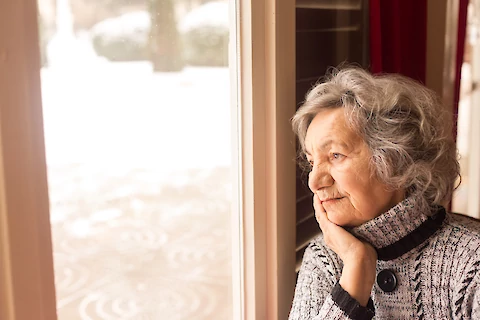
12 Signs of Seasonal Affective Disorder for Seniors
Seasonal affective disorder affects millions of Americans, but many may not know they have the condition. Left untreated, it can cause problems at home, school, work, and in relationships. It can also complicate treatment for conditions such as anxiety, bipolar disorder, and substance use disorder.
Knowing the signs and symptoms of SAD will help you spot them in yourself or your senior loved one and seek treatment before it is too late.
What is Seasonal Affective Disorder (SAD)?
Seasonal affective disorder is also referred to as seasonal depression. It is a form of depression that sets in or gets worse at a specific time every year. Although it can occur at any time of the year, it affects most people during the winter.
Young people are just as likely to experience SAD as the elderly. But seniors are more likely to struggle with loneliness and social isolation, so they are more at risk.
What Causes Seasonal Affective Disorder?
In fall and winter, the amount of daylight declines, affecting circadian rhythms. The reduced sunlight causes vitamin D deficiency, low serotonin (which regulates mood), disrupted sleep patterns, and high melatonin (which maintains the sleep-wake cycle), leading to depression and lower energy levels.
That is why the symptoms go away in summer and spring when the amount of daylight goes back to normal.
Signs to Look Out For
Some of the common signs that might indicate that you or your elderly loved one is suffering from SAD include:
- Increase or decrease in appetite
- Problems with sleep or oversleeping
- Feeling physically weak, low energy, and tiredness
- Higher anxiety levels
- Unexplained increase or decrease in weight
- Losing passion and energy to engage in activities you or someone else usually enjoys
- Feelings of worthlessness, hopelessness, and sadness
- Trouble concentrating
- Agitation, irritability, and helplessness
- Wanting to be alone or having unusual antisocial behavior
- Frequent thoughts of suicide and death
- Changes in personal hygiene
The signs may start mild and become more severe as the season progresses. So, if you notice them in yourself or your elderly loved one, take it seriously and seek treatment. Symptoms typically appear in late fall or early winter and go away in summer and spring when the daylight hours grow longer. However, it could be the opposite, where they start in summer and spring and end in winter and fall.
Prevent SAD with the Assistance of Senior Helpers of Baltimore
If you or your senior loved one feels moody and lacks energy around the same time each year, don't brush it off as something that you or they need to tough out without help.
Seniors in Baltimore, Annapolis, Columbia, Baltimore County, and Howard County can prevent the onset of SAD with the help of Senior Helpers. We are the nation's premier provider of in-home senior care with services ranging from specialized care for those with chronic diseases to companion services for seniors looking for assistance with daily activities.
We can help your senior loved one make lifestyle changes to prevent SAD, monitor them for signs, and take measures to help them overcome it. Contact us today to learn more.